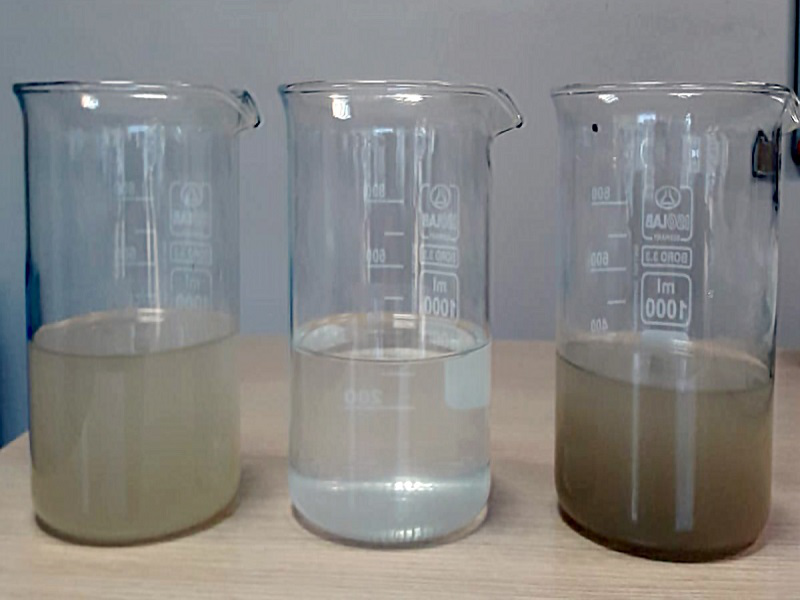Turbidity is the cloudiness or haziness of a fluid caused by suspended solids that are usually invisible to the naked eye. The measurement of Turbidity is an important test when trying to determine the quality of water. It is an aggregate optical property of the water and does not identify individual substances.
Water almost always contains suspended solids that consist of many different particles of varying sizes. Some of the particles are large enough and heavy enough to eventually settle to the bottom of a container if a sample is left standing (these are the settle able solids). The smaller particles will only settle slowly, if at all (these are the colloidal solids). It’s these particles that cause the water to look turbid.
The term Turbidity (also called haze) can also be applied to transparent solids like plastic and glass.
What Causes Turbidity?
Erosion and effluent from highly urbanized zones contribute to the turbidity of waters in those areas. Construction, mining and agriculture, disturb the soil and can lead to raised levels of sediment which run off into waterways during storms. Storm water from paved surfaces like roads, bridges and parking lots also contribute to turbidity.
In drinking water the higher the level of turbidity, the higher the chance that those using it could develop gastrointestinal diseases. Contaminants like viruses and pathogenic bacteria can attach themselves to the suspended solids. These solids then interfere with disinfection.
High turbidity levels can reduce the amount of light reaching lower depths in bodies of water like rivers, lakes and reservoirs, which inhibits growth of some forms of aquatic plants and can negatively affect species that are dependent on them, like fish and shellfish. High turbidity levels will also hinder a fish’s ability to absorb dissolved oxygen.
How is Turbidity Measured?
The most common measurement for turbidity in the United States are the Nephelometric Turbidity Units (NTU).
Nephelometric Turbidity Units (NTU).
• NTU units are most commonly used by purification plants. We rather use suspended solids (SS) measured in mg/l or ppm because we mainly operate on the wastewater treatment plant market, but there is a relation between suspended solids and NTU.
Advantages
• very accurate, and especially useful for measuring very low turbidities (less than 5 NTU)
Disadvantages
• high cost
• need power supply (mains or battery)
• easily damage
What are the impacts of turbidity?
The main impact is merely esthetic: nobody likes the look of dirty water.
But also, it is essential to eliminate the turbidity of water in order to effectively disinfect it for drinking purposes. This adds some extra cost to the treatment of surface water supplies.
The suspended particles also help the attachment of heavy metals and many other toxic organic compounds and pesticides.
Turbidity guidelines for drinking water For drinking water supplies
The following guidelines should be taken into consideration :
• Drinking water should have a turbidity of 5 NTU/JTU or less. Turbidity of more than 5 NTU/JTU would be noticed by users and may cause rejection of the supply.
• Where water is chlorinated, turbidity should be less than 5 NTU/JTU and preferably less than 1 NTU/JTU for chlorination to be effective
What Hyper does to help with the turbidity?
Generally turbidity is not observed in bore-well water, but if it is present, Hyper suggests a UF (Ultra-Filtration) System installation or an MBR (Membrane Bio Reactor) system, which helps to eliminate turbidity.
Contact us through the CONTACT US PAGE for any Water And Waste Water Concerns!!


